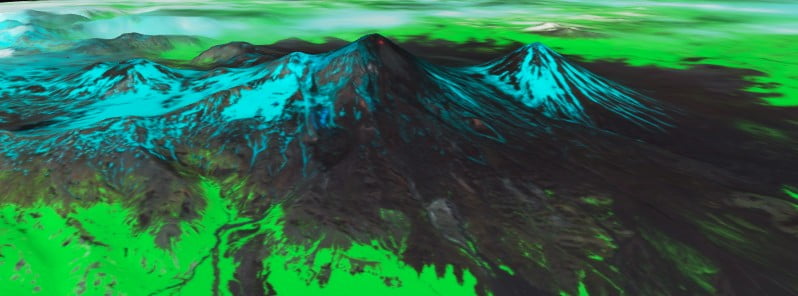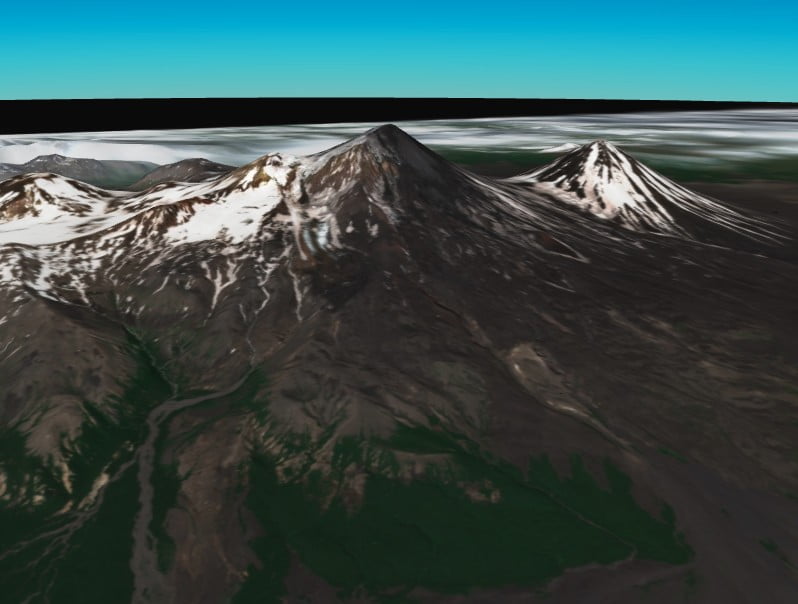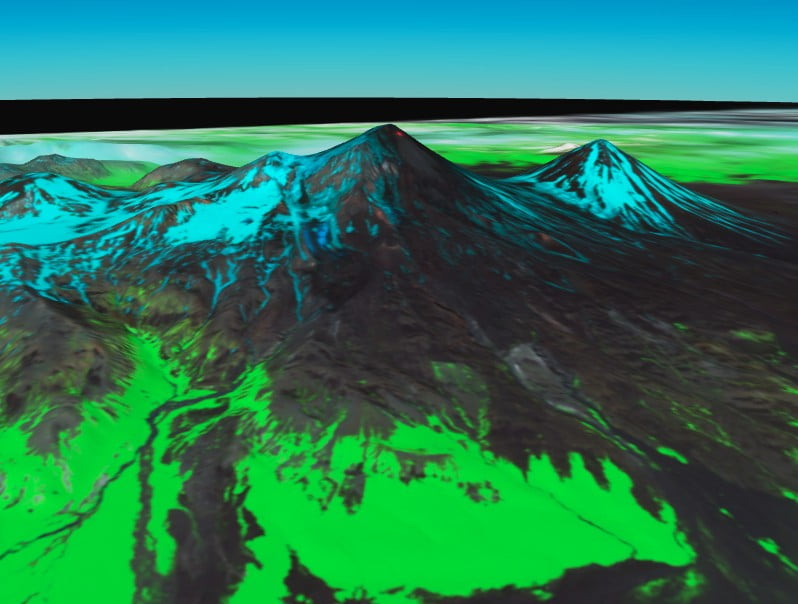Slow eruption of lava at Pavlof volcano, Alaska

Pavlof Volcano continues to erupt from the active vent on its east flank, just below the summit. The Aviation Color Code remains at Orange. Previous eruptions of Pavlof indicate that the level of unrest can change quickly and the progression to more significant eruptive activity can occur with little or no warning.
Seismic tremor and elevated surface temperatures in satellite data were observed throughout the week ending July 22, and minor explosions were detected daily in seismic and infrasound data, the Alaska Volcano Observatory (AVO) reports.1
Weak ash emissions associated with this activity were observed occasionally in web camera images when not obscured by clouds.
A pilot report at 11:50 local time on July 22 observed a low-level ash cloud to about 2.6 km (8 600 feet) above sea level which correlates with slightly larger explosion signals detected in infrasound data. No ash emissions were observed in satellite data.
Periods of lava spatter and fountaining from the vent on the volcano’s upper east flank have been occurring since mid-November 2021.
This activity has built a small cone and sent flows down the flank that melt the snow and ice and produce variable amounts of meltwater.
The meltwater typically incorporates loose debris on the flank of the volcano and forms thin (less than 2 m / 6.5 feet thick) lahars. The lahar deposits extend down the east-southeast flank for several kilometers, not quite to the base of the volcano.
Previous eruptions of Pavlof indicate that the level of unrest can change quickly and the progression to more significant eruptive activity can occur with little or no warning.
Pavlof is monitored by local seismic and infrasound sensors, satellite data, web cameras, and remote infrasound and lightning networks.


Geological summary
The most active volcano of the Aleutian arc, Pavlof is a 2 519-m-high (8 264 feet) Holocene stratovolcano that was constructed along a line of vents extending NE from the Emmons Lake caldera.
Pavlof and its twin volcano to the NE, 2 142-m-high (7 027 feet) Pavlof Sister, form a dramatic pair of symmetrical, glacier-covered stratovolcanoes that tower above Pavlof and Volcano bays.
A third cone, Little Pavlof, is a smaller volcano on the SW flank of Pavlof volcano, near the rim of Emmons Lake caldera.
Unlike Pavlof Sister, Pavlof has been frequently active in historical time, typically producing Strombolian to Vulcanian explosive eruptions from the summit vents and occasional lava flows. The active vents lie near the summit on the north and east sides.
The largest historical eruption took place in 1911, at the end of a 5-year-long eruptive episode, when a fissure opened on the N flank, ejecting large blocks and issuing lava flows.2
References:
1 ALASKA VOLCANO OBSERVATORY WEEKLY UPDATE U.S. Geological Survey Friday, July 22, 2022, 1:31 PM AKDT (Friday, July 22, 2022, 21:31 UTC)
2 Pavlof – Geological summary – GVP
Featured image: Pavlof volcano on July 17, 2022. Credit: Copernicus EU/Sentinel-2, EO Browser, The Watchers

Commenting rules and guidelines
We value the thoughts and opinions of our readers and welcome healthy discussions on our website. In order to maintain a respectful and positive community, we ask that all commenters follow these rules.